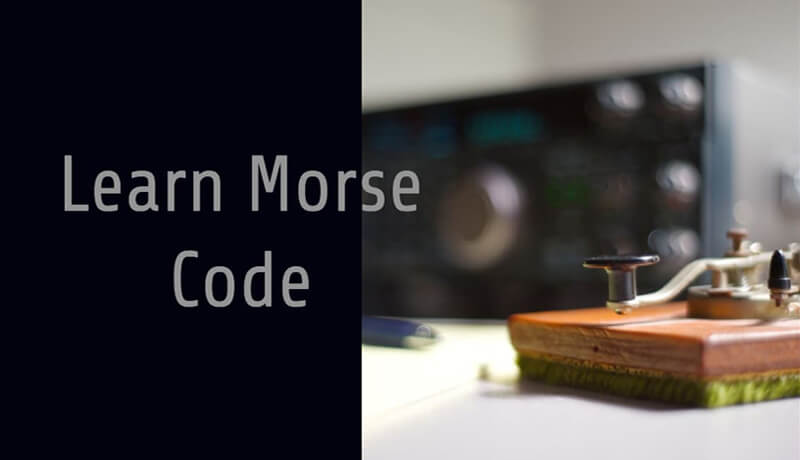
Morse code, the intricate language of dots and dashes, has transcended centuries, proving its enduring utility and timeless appeal. Whether it’s the thrill of decoding a secret message or the desire to acquire a unique skill, learning Morse code can be an exciting venture. Here’s a step-by-step guide on how to embark on this fascinating journey.
1. Understanding Morse Code: The Basics
Morse code translates the alphabet and numbers into sequences of short (dot) and long (dash) signals. For instance, ‘A’ is represented as ‘.-‘, and ‘1’ as ‘.—-‘.
2. Immerse Yourself: Begin with Familiarization
- Visual Memory: Start by familiarizing yourself with Morse code charts available online or in reference books.
- Auditory Acquaintance: Tune into Morse code transmissions to understand the rhythm. Websites and apps can play Morse code sounds for each letter and number.
3. Start Small: Focus on Alphabets
- Chunking: Begin with a small set of letters. Practice both recognizing and writing down the Morse equivalents.
- Use Mnemonics: Create associations or phrases to remember the sequences, such as equating ‘E’ (.) with a single ‘Egg’.
4. Introduce Numbers and Punctuation
Once comfortable with alphabets, gradually introduce numbers and common punctuation marks into your practice sessions.
5. Practice Regularly: Consistency is Key
- Flashcards: Use flashcards to test your recall. One side could have the letter, and the reverse side the Morse code.
- Daily Words: Convert everyday words or phrases into Morse code to build your fluency.
6. Use Technology: Leverage Apps and Software
- Learning Apps: Numerous apps, such as ‘Morse Toad’, provide interactive lessons and quizzes.
- Software Simulators: Software like ‘Just Learn Morse Code’ can simulate radio-like Morse code transmissions for practice.
7. Engage in Practical Application
- Pen and Paper: Write Morse code messages to friends who are also learning.
- Light Signals: Use flashlights to communicate Morse code in the dark, mimicking traditional signaling methods.
- Sound Practice: Practice with a buzzer, creating sounds for dots and dashes.
8. Challenge Yourself: Increase Complexity
- Speed Trials: Gradually increase the speed of transmission as you practice listening.
- Decode Unknown Text: Try decoding unfamiliar text or Morse code from amateur radio transmissions.
9. Join Communities: Social Learning
- Online Forums: Platforms like Reddit or specialized forums can connect you with fellow Morse code enthusiasts.
- Local Clubs: Amateur radio clubs often have members proficient in Morse code who can share insights.
10. Stay Patient and Persistent
Learning Morse code is akin to learning a new language. Patience, regular practice, and continuous engagement are essential.
Conclusion: Embarking on a Timeless Journey
Deciphering the language of dots and dashes can open up new avenues for communication and intellectual stimulation. By following a systematic approach and leveraging both traditional and modern tools, learning Morse code can become a gratifying pursuit. So, ready your flashlights, buzzers, and pens, and step into the intriguing world of Morse code, where every dash echoes history and every dot illuminates a message.







